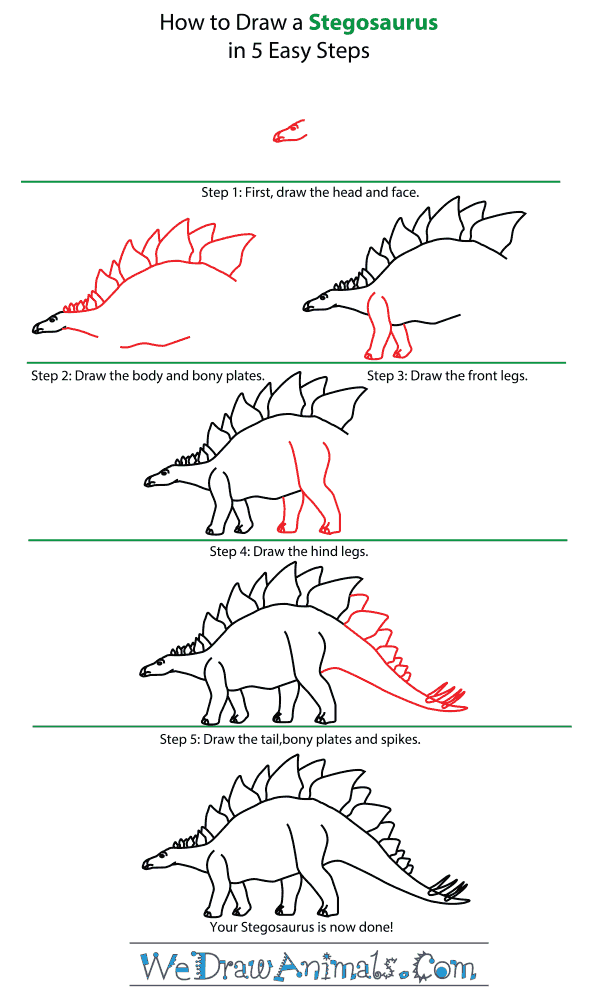In this quick tutorial you'll learn how to draw a Stegosaurus in 5 easy steps - great for kids and novice artists.
The images above represent how your finished drawing is going to look and the steps involved.
Below are the individual steps - you can click on each one for a High Resolution printable PDF version.
At the bottom you can read some interesting facts about the Stegosaurus.
Make sure you also check out any of the hundreds of drawing tutorials grouped by category.
How to Draw a Stegosaurus - Step-by-Step Tutorial
Step 1: First, draw the head and face. Stegosaurus had a long, small, flat head, almost like a turtle’s. Keep in the mind the body will be much larger.
Step 2: Draw the body and bony plates. The neck will widen out from the back of the small head and rise in a large bump. From the neck back, draw a row of pointed triangles, shaped a lot like shark teeth. They will start very small and get much larger along the stegosaurus’ back.
Step 3: Draw the front legs. Because of its shape, these would have to have been sturdy, short legs, much like an elephants’ legs.
Step 4: Draw the hind legs. These looked similar to the front, but the thighs started much higher on the stegosaurus’ body and had more bend to them, right at the knees.
Step 5: Draw the tail and bony plates. The tail slopes down from the back of the body very similar to how the neck slopes up, but it is thinner. The plates will decrease in size from the largest plates on the back. Draw a series of four spikes at the very end of the tail, which the stegosaurus used as a weapon.
Interesting Facts about the STEGOSAURUS
The Stegosaurus is a member of the dinosaur group and the scientific term for them is S. armatus. Their Greek name “stego-saurus” means “roof-lizard” in English. The Latin word “armatus” means “armor” in English, because this animal possessed protective framework in its skeleton. They possessed distinctive tail spikes and back plates, to protect them from predators. Since they had short arms, the back was curved, making the small head low to the ground and large tail able to swing strongly.
Did you know?
- The animal was first documented in 1877.
- They could grow to more than 30 feet long.
- The maximum speed was about 5 miles per hour.
- They could weigh about 11,000 pounds.
- There were 17 back plates.
- Their back plates were about 2 feet tall.
- Their tail spikes were up to 3 feet long.
- The brain was about 1/8 of a pound.
his vegetarian and four-legged animal had a beak like a turtle with teeth and cheeks for grinding grass like a cow. The back plates are arranged similarly to the spinal projections on an iguana. They lived in western North America and southwestern Europe. Fossils of footprints suggest that this animal gathered in herds.






